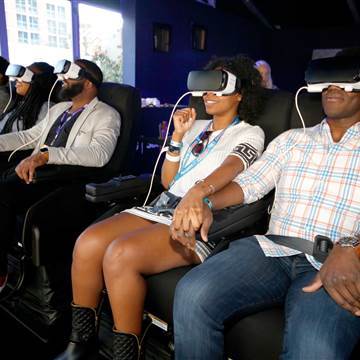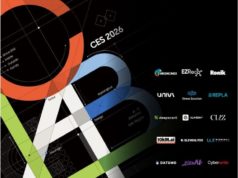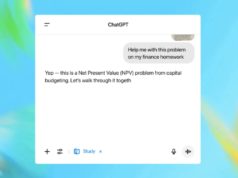
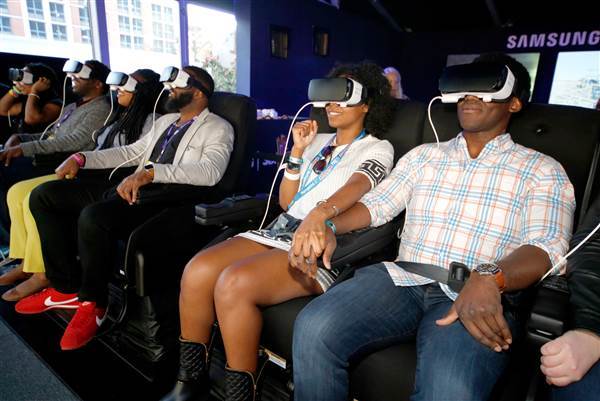
One hundred African-American college students are headed to the famed SXSW festival today courtesy of an Atlanta technology entrepreneur and his NFL-linebacker partner.
The effort, dubbed HBCU@SXSW, is aimed at expanding opportunities to build startups or to become investors in those companies. It also seeks to introduce black students, particularly from historically Black colleges to heavy hitters from Silicon Valley, which is notorious for its lack of diversity.
HBCU @SXSW, now in its second year, is the brainchild of Rodney Sampson, co-founder and CEO of Opportunity Ecosystem. The Atlanta-based company partners with professional athletes (an early investor is Tennessee Titans defensive end Derrick Morgan), foundations and municipalities to connect entrepreneurs and tech investors.
Related: Marques Brownlee Knows ‘Dope Tech’
“I’ve been doing ecosystem-building work in the innovation and entrepreneurship economy for four years, ” said Sampson, who created four startups himself — two of which failed and two from which he made successful exits. “In order to close the wealth gap and end poverty, we have to get more African-American entrepreneurs and underrepresented communities into tech.”
It’s a straightforward proposition with high barriers. Tech insiders refer to the world of startups and venture capital as an “ecosystem” because their entrepreneurs and investors contribute to and feed off of one another in such an airtight loop that outsiders rarely break through.
Eighty-three percent of the respondents to San Francisco-based First Round Capital’s annual survey of startup CEOs were men. Sixty-three percent said their workforces are mostly male. While women-led companies were in the minority (ethnic diversity numbers weren’t reported), 87 percent of women-led companies had specific plans to increase workforce diversity compared with 62 percent of the male-led companies did.
Those working to address the issue say that creating a diverse tech industry isn’t an end unto itself. The racial-wealth gap in the U.S. remains massive, while the fastest new fortunes are being made among tech entrepreneurs and the investor class. In other words, the fastest way to address the wealth gap is to get African-Americans involved in technology.

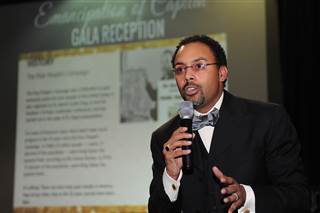
But proximity is a barrier: more than 80 percent of tech venture capital is invested in companies based in Silicon Valley, Boston or New York, said Winston Henderson, a Boston entrepreneur who consults with historically black colleges. And while many of the most profitable innovations are born on college campuses (Napster and Facebook were born in Harvard dormitories), most black engineers matriculate at HBCUs, none of which are near the centers of tech investment.
Related: A Real Baller: NFL Linebacker Derrick Morgan Tackles Tech Industry
“Physical proximity doesn’t account for everything, but it’s extremely difficult to get these opportunities,” Henderson said. “You have to either be visible or know how to connect the dots.”
That’s the dance that Sampson wants to teach students at SXSW. The 100 selected came from among 400 applicants. He imagines the program as a leg up for students as well as a boon for tech companies — who can shop for talent among dozens of represented colleges in one place — and a revenue driver for Opportunity Ecosystem, which is developing its own entrepreneurship curriculum.
Over three days, the students will get an intensive orientation to the tech world. They’ll meet with startup entrepreneurs, take classes in coding, film, media and using social media to engage political movements, and attend a recruitment breakfast with more than 50 tech companies. They’ll also receive an SXSW Interactive badge, worth $1,325 and which gives them access to hundreds of sessions and speakers.
“They’ll go from 8 a.m. until 10 p.m. straight. No downtime,” Sampson said. But the potential payoff is worthwhile. “Imagine coming out of college and not only getting a job but then getting some shares of a company that goes public like Snapchat,” he said.
